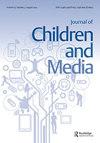Sleep deprived but socially connected: balancing the risks and benefits of adolescent screen time during COVID-19
IF 2.1
3区 心理学
Q2 COMMUNICATION
引用次数: 8
Abstract
The COVID-19 pandemic has drastically altered the daily lives of families across the globe, forcing many to remain physically distanced and quarantine together at home as government-ordered shutdowns shuttered schools, gyms, restaurants, and workplaces. The effects of these guidelines may be particularly impactful for adolescents, as they navigate developmental changes in peer relationships in an unprecedented and more isolated way. Though adolescents are optimally positioned to utilize technology skills and platforms for social connectivity, this massive shift to online engagement may have detrimental implications for sleep and well-being. Before the pandemic, over two-thirds of U.S. teens were chronically sleep deprived (Centers for Disease Control, 2017), which may be exacerbated by pandemic-related increases in screen time. As distancing continues, researchers should reconsider the benefits and risks of adolescent screen use, including the role of caregiver monitoring.睡眠不足但与社会有联系:平衡新冠肺炎期间青少年屏幕时间的风险和益处
新冠肺炎大流行极大地改变了全球家庭的日常生活,迫使许多家庭保持身体距离,并在家隔离,因为政府下令关闭学校、健身房、餐馆和工作场所。这些指导方针的影响可能对青少年特别有影响,因为他们以前所未有、更孤立的方式应对同伴关系的发展变化。尽管青少年处于利用技术技能和平台进行社交的最佳位置,但这种向在线参与的大规模转变可能会对睡眠和健康产生不利影响。在疫情之前,超过三分之二的美国青少年长期睡眠不足(美国疾病控制中心,2017),与疫情相关的屏幕时间增加可能会加剧这种情况。随着距离的持续,研究人员应该重新考虑青少年使用屏幕的好处和风险,包括护理人员监控的作用。
本文章由计算机程序翻译,如有差异,请以英文原文为准。
求助全文
约1分钟内获得全文
求助全文

 求助内容:
求助内容: 应助结果提醒方式:
应助结果提醒方式:


